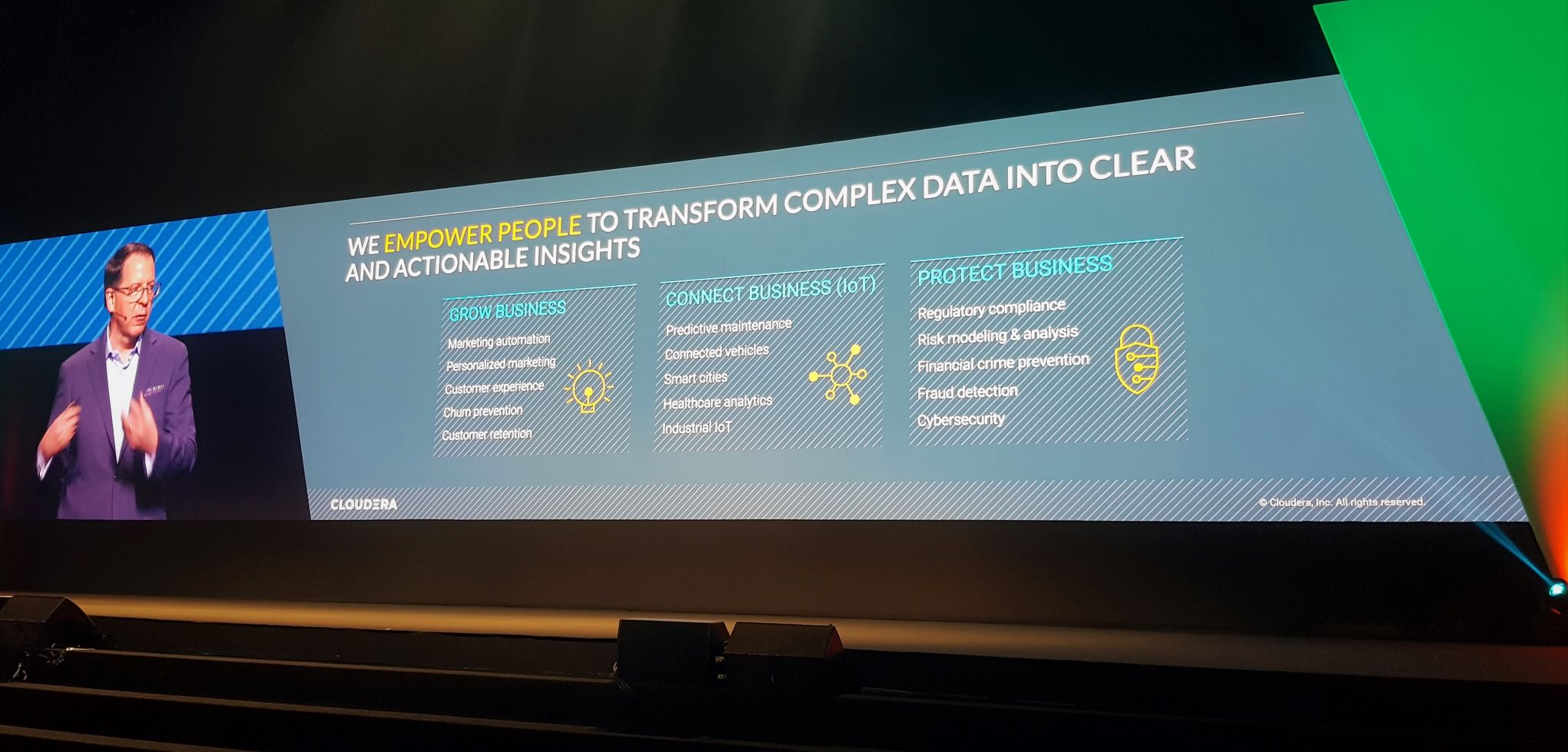
Cloudera has a problem. The data warehousing and analytics company has merged with its closest rival Hortonworks, taking a key competitor off the market and pooling engineering and sales resources. It boasts a truly enviable roster of clients, including leading banks, pharmaceutical companies and government agencies. Yet in a world being “eaten by software” and in which the “data is the new oil” cliché is bandied about with abandon, its share price has fallen 40 percent in 12 months.
What’s happening? The tumbling confidence in its performance is, largely, a result of cold numbers: Q4 losses reported last week were $85.5 million on sales of $144.5 million (analysts were expecting sales of $209.2 million). Guidance of $855 million of revenue in fiscal 2020 is also well below the $965 million that Cloudera projected in its S-4 merger document; the company talks, somewhat unusually, of $45 million of “dis-synergies” from the merger going into fiscal ’21…
What’s the answer? At Cloudera’s Data Works Summit in Barcelona this week, the emphasis was on the launch this summer of its new Cloudera Data Platform” (CDP): a combination of the best of Cloudera and Hortonworks’ respective CDH and HDP platforms with a bonus smattering of fresh new open source goodies ladled on top, along with migration tools to help move customers off on-prem deployments.
(Both CDH and HDP are effectively frameworks for distributed storage and processing of large, multi-source data sets, built around a smorgasboard of sometimes overlapping Apache projects, nurtured over the years by Cloudera’s and Hadoop’s teams).
The aim, in brief, to build a truly one-stop Big Data and analytics shop, with a unified open architecture made infinitely flexible through “container cloud”.

Initially launching on AWS and Azure, the aim is to roll out a product that can run across any conceivable private/public cloud configuration by early 2021; something made possible by the rise of containers and Kubernetes. (The platform will be virtualised by default.)
As Cloudera’s Fred Koopmans, VP Product Management put it in Barcelona: “You can ingest data, process and clean it up, do something predictive on it… Multiple applications are great, but they need common governance mechanism [that the new platform will provide]. It includes open APIs to bring in other software development companies to enhance the platform and it’s 100 percent open source, which means no dead ends for our customers.”
Cloudera Data Platform will come with a direct upgrade path from CDH 5 or CDH 6, HDP 2 or HDP 3.
The merger brought immediate wins for customers as a result of tooling synergies: e.g. for Cloudera’s clients a remote cluster management service offering that Hadoop customers had (but which Cloudera didn’t), along with an Apache Metron-based cybersecurity solution and expanded data warehousing tools; including algorithms that choose which CDH/HDP tool is best for a given job.
Other new capabilities for current platforms are also available as the company readies for the summer launch of CDP: CDH customers now have access to an integrated ingest and streaming platform (Cloudera Data Flow), a SQL remediation interface for HBase apps and expanded operational tools for workload management, cloud backup and more. HDP customers meanwhile get access to an integrated Machine Learning model development platform (Cloudera Data Science Workbench) and the expanded operational tools.
Yet tough questions remain about focus and execution as customers wait for the company to bring the combined tool to market…
Computer Business Review put some to Chief Marketing Officer Mick Hollison. Read his responses below…
Read this –Q&A: Cloudera’s Fight Back Begins in 3, 2, 1…






